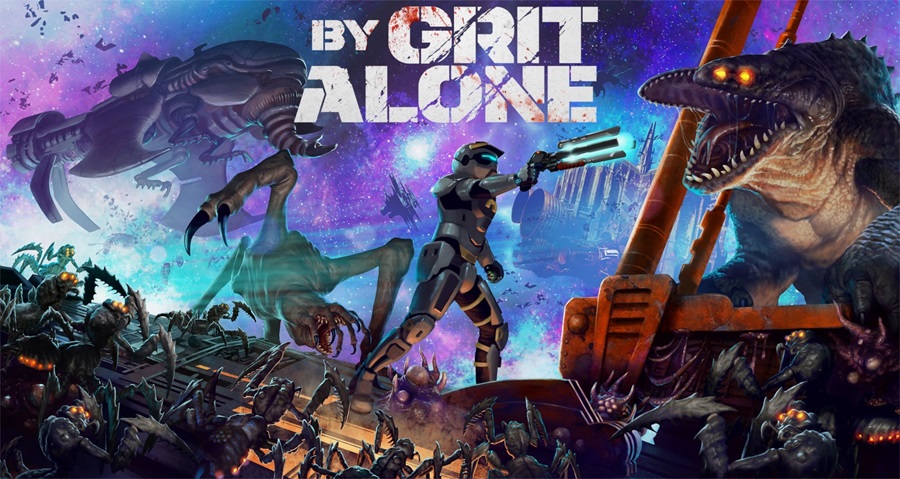
TL;DR for By Grit Alone
(played on a Meta Quest 3 128 GB model)
| Pros | Cons |
| + Excellent story | – Janky core controls |
| + Great pacing | – Middling graphics |
| + Varied levels | |
| + Streamlined design philosophy |
INTRODUCTION
Here at Auganix, we rate videogames using an extremely objective scientific matrix of painstakingly selected variables, weighted against each other in precise measure and scale.
Dozens of racially diverse people in lab coats handled various graphs, measuring implements, and beakers such that we can now precisely process the subjective enjoyment of the gaming artform; refining it into a simple integer through the proprietary utilization of our ‘Hyper-Objective Omniscient Evaluation Yardstick’ (HOOEY).

Yes, it’s true that many eggheads died by their own hand in the pursuit of this empirically perfect scoring system.
And—while their sacrifice will always be remembered—this was ultimately a small price to pay in the name of our journalistic HOOEY.
As the primary game reviewer here at Auganix, it is my solemn pleasure—and exalted duty—to aim this HOOEY at the brand new title, By Grit Alone (BGA) from indie developer, Crooks Peak.
Indeed, never before have I so heavily leaned on HOOEY for a final verdict.
You see, my paltry human judgment wavered greatly this time around, dear reader.
Some parts of BGA convinced me that I might rate it a 4/10, whereas other times I was flown into a manic appraisal reaching a 9/10!
So while the heart is deceitful above all things (Jeremiah 17:9), the HOOEY does thankfully remain both omniscient and hyper-objective.
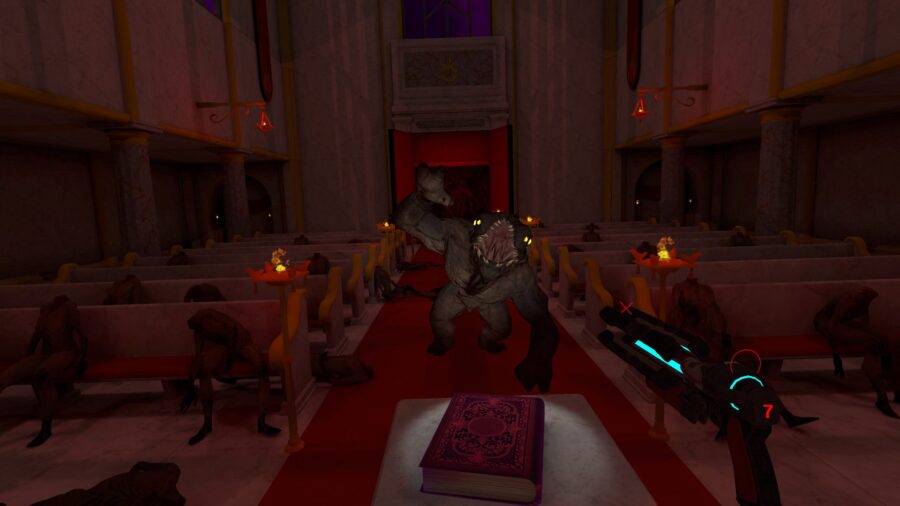
So what is this game that has inspired in me such dread and joy in equal measure?
Well let me tell you, dear reader.
By Grit Alone is an action-horror shooter for the Meta Quest.
More specifically, it’s a story-driven action-horror sci-fi anthology FPS with bullet-hell elements.
If that last sentence intimidates you, don’t worry…
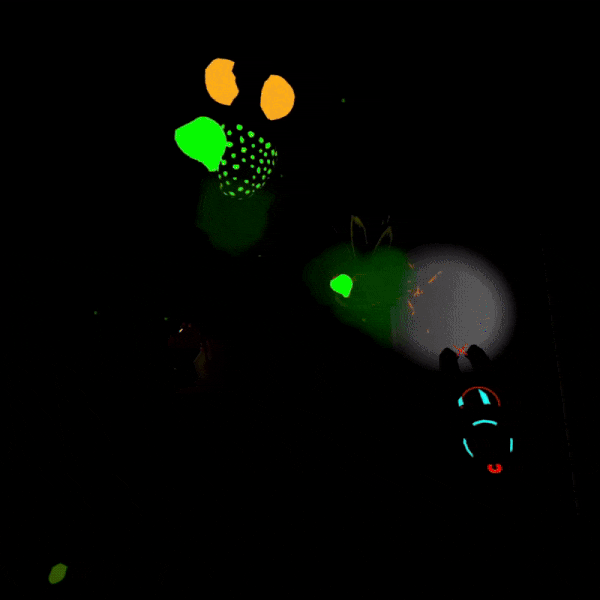
STORY
BGA’s storytelling is just about unimpeachable.
Fundamentally, it’s an anthology; each section of the game tells a different story that places you as a spacer caught up in some new mysterious cosmic peril.
The review version of the game we received (build 1.0.1) only covers the first section, so it remains entirely possible that the writing will fall off later on.
But given that the writers on board are some of the minds behind the likes of Resident Evil, Judge Dredd, Doctor Who, and Dead Space, it seems likely to me that this unimpeachable story-telling will continue as the North Star of the full game as well.
If that impressive resume didn’t make it clear, the “sci-fi” of By Grit Alone is not just an aesthetic container for gameplay. Expect well-paced, mind-bending stories.
Real stories.
In the burgeoning world of VR gaming, it makes sense that story-driven titles aren’t in.
Devs are still mostly turned on by new and interesting core gameplay loops that can take advantage of this new medium.
It makes sense that the current VR marketplace is dominated by titles offering just a few unique mechanics and then plastering on a stucco-story, thin and wet enough to wrap its mechanics up into a visual motif.
And that’s not an indictment!
Looking back on my own reviews, these gameplay-forward titles—the ones that make some novel mechanic and its variations the cornerstone of their game design—received an average score of 7.5/10.
In fact, one of them earned Auganix’s first (and thus far only) 9/10 score!
Inversely, looking at the (far fewer) story-forward games I’ve reviewed and averaging (both of) their scores results in a mean 3.5/10. Yikes.
But BGA is different.
BGA is Love, Death & Robots or Black Mirror or The Twilight Zone or any other real sci-fi anthology set in the medium of a challenging VR shooter.
It reveals each beat of the plot through immersive environmental story-telling; expertly navigating tone, pacing, and genre tropes with the satisfying efficacy of any book or movie.
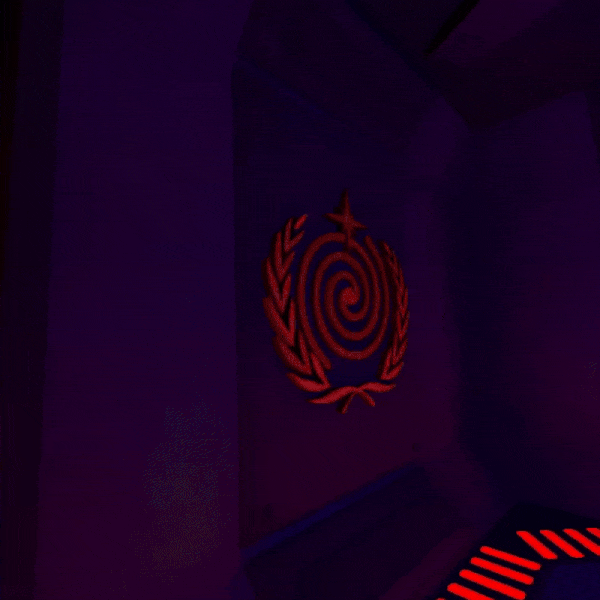
And while actually getting to the story can be difficult, that’s not because of bloat.
A streamlined, bloatless game was an explicit and well-executed aim of the developer.
Rather, advancing in the story is difficult simply because the game is difficult.
The player is warned right out of the gate: “This game is hard”.
Made harder by the clumsy execution of a couple of very crucial controls.
But more on that in a bit.
Thankfully, if you’re a casual gamer or a story enthusiast, there is an “invincible” mode that makes it impossible for you to fail.
Invincible mode means that any level of proficiency or patience will still get you through BGA’s expertly crafted atmospheric sci-fi terror.
On the other hand, if you just want to go have some oft-lost and hard-won gun fights with aliens then By Grit Alone’ll be your Huckleberry.
The story is told largely through the diegetic means of physical text logs, voice logs, and holograms. And you’re free to skip right past them.
Hell, you can even blast the hologram projectors if you really want to give the middle finger to story-telling.
GAMEPLAY
Skip the story and just take in the challenging gameplay if you want to. Skip the challenge and just take in the story if you want to.
Choices like these exist as a part of the game’s streamlined design philosophy.
And in almost every way, that philosophy is a breath of fresh air:
No loading screens. No inventory management. No skill trees. No fluff.
BGA is like a full session acoustic jam.
It’s just story-driven action and suspense, oscillating artfully in time and volume. Macroscopically, the game is beautifully designed (I tried for a while and that’s the least pretentious way I knew how to write that sentence).
Gameplay stays fresh and varied through the smart injection of puzzles, chases, traps to navigate, and more.
The basic gunplay is okay.
The futuristic-yet-low-poly aesthetic means clear visual information down the laser-lacquered iron sights.
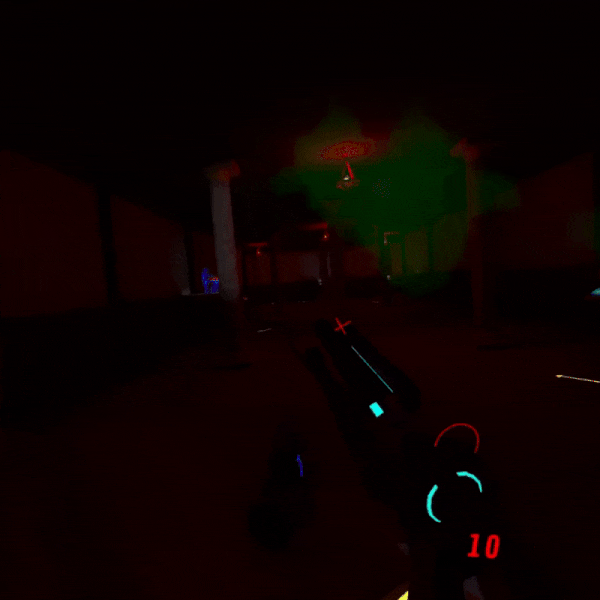
Your grenades are your other weapon and they suck.
They don’t bounce, so you can’t throw them around corners.
The explosion radius is minimal and not aesthetically satisfying.
And they move so slowly that you’ll nearly always miss your speedy enemies.
In fact, nearly all projectiles in this game move very slowly.
At first it all just seemed floaty to me.
I wondered if getting enemies to telegraph their attacks longer wouldn’t accomplish the same necessary player reaction timing as these weird, floaty projectiles.
Little did I know, the game was actually training me for the first-person bullet hell to come.
For those of you unfamiliar with the genre, bullet hell games are characterized by combat that features an overwhelming number of projectiles to dodge.
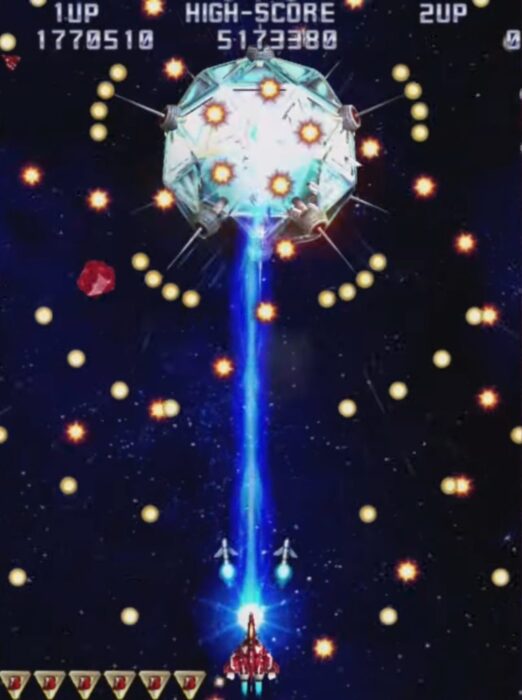
Now I don’t know about you, but I’ve never played an FPS bullet hell before!
Actually, I’m willing to bet that you also haven’t played an FPS bullet hell before because I researched them and, sadly, couldn’t find one that ever really got popular (happily though, I did find out about MOTHERGUNSHIP: FORGE).
Anyway, this transition from hallway-crawling survival horror to a Lovecraftian bullet hell nightmare works really well with the game’s simplified gunplay.
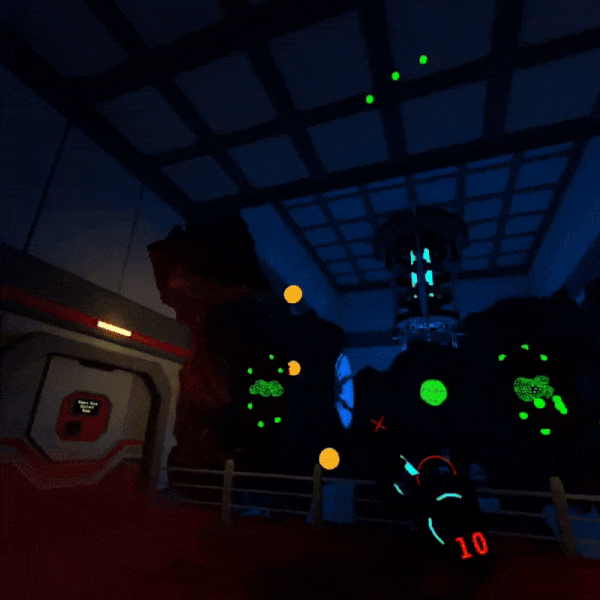
The scope of the action mirrors the scope of our understanding of the horrible mystery as it unfolds throughout the game: Intensity begets intensity.
This harmonious unfolding of story and gameplay—as well as the instincts of the devs to break their harmony for dramatic, comedic, and horrific effect—speaks to BGA’s highly thoughtful composition.
But even the best-broken stories—the ones what daggum hit all the story circle parts—have to have their words and letters do good from one sentence to also the next sentence, too.
That is to say, that—for all of the expert craftsmanship displayed in the grandiose narrative, tone, genre-savviness, pacing, and sheer poetry of these elements’ expression through the game’s design and philosophy en masse—playing a videogame most fundamentally means playing its core mechanics.
And, sadly, the core mechanics here need work.
Storing your weapons diegetically on your body is a VR FPS staple at this point.
Your gun is—let’s say (as is the case for BGA)—holstered on your right hip.
You know where your right hip is. It’s between your right thigh and your abdomen; exactly where you left it!
Ah, good old reliable right hip!
Yet for some reason, instead of anchoring your equipment to your body, By Grit Alone decided that it would anchor equipment to the rotation of your head.
Now don’t misunderstand me!
Your equipment isn’t on your head; it’s on your body.
But instead of your gun staying holstered to where your right hip actually exists, it’s anchored to where your right hip would be if you were looking straight ahead.
So if you rotate your head to the left, your gun rotates around your body with it, ending up holstered at your crotch.
If you rotate your head to the right, the inverse happens, and your gun ends up holstered at your right cheek.
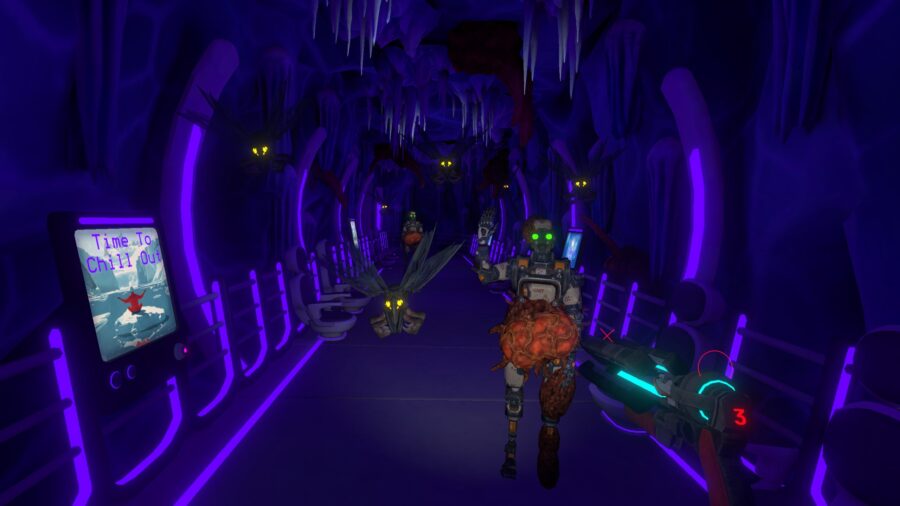
This is annoying enough in a game that happily throws enemies at you when you least expect it, requiring that you draw your weapon quickly. It is a horror game after all. The expectation of safety is—and should be—something of an illusion.
But this is made ever worse when you inevitably conclude that you should just never put your gun away.
You see, you’ll understandably proceed to keep your gun out; pointing it at every shadow and around every corner.
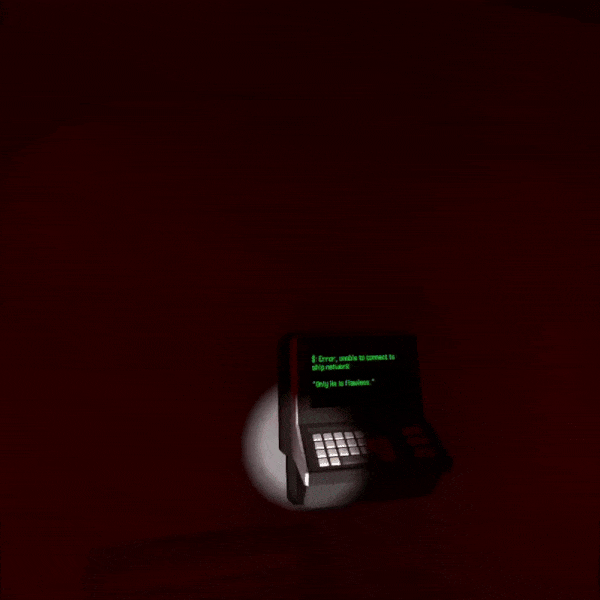
Then you’ll find one of the many text logs stored about the game, and—attempting to read it, arms beared—realize that this core mechanic too is a janky mess.
I mean firstly, there’s no force grab so you’ll have to duck down to grab the thing.
Then you’ll notice that the duck button is mapped to the face of the left controller—same as the movement stick—so don’t try to grab it fluidly while moving because that’s off the table.
Alright. Now that you’ve got it, you’ll see that you actually can’t scroll through it without your right hand. And I mean this literally.
Even if you prop the text log up or put it on a desk or whatever, the game simply won’t allow you to drag the text with your left hand.
It’s just a plain and obvious thing that is broken in such a way as to impair how you play:
You can’t read without your gun hand and you can’t reliably draw your gun in a pinch when the aliens come for you mid-read.
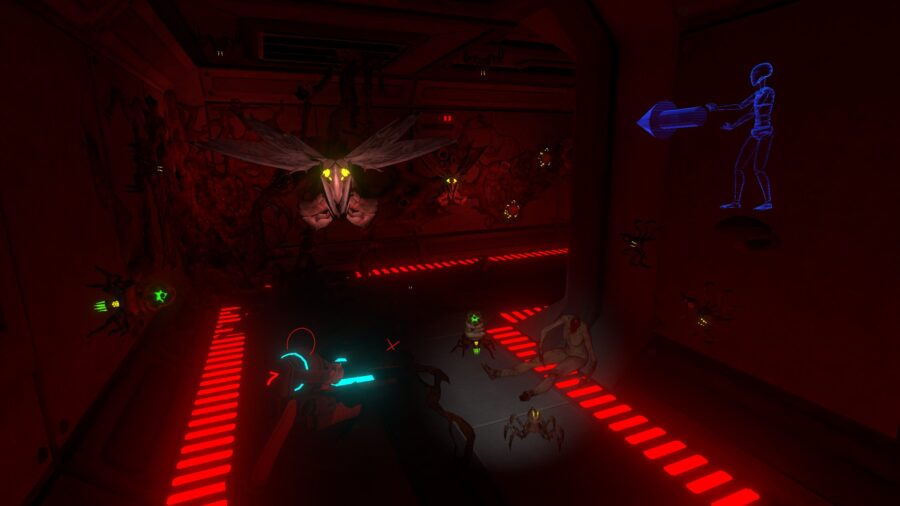
But much, much worse than this when it comes to shoddy basic mechanics is your ammunition!
Now you might think you see where I’m going with this:
Alien-horror action erupts!
Your gun’s out of ammo!
The swarm approaches!
Oops! Your ammo is on your crotch now actually!
You die!
Yes. True.
But not the worst part.
You see—as part of their mostly amazing philosophy of streamlined design—the devs decided to make your grenades your ammo.
When you put a grenade into your gun it becomes ten bullets.
Cool, I guess!
It’s the future after all!
I mean, why not? Right?
Right?
Wrong!
Your floating, rotating holsters are why not!
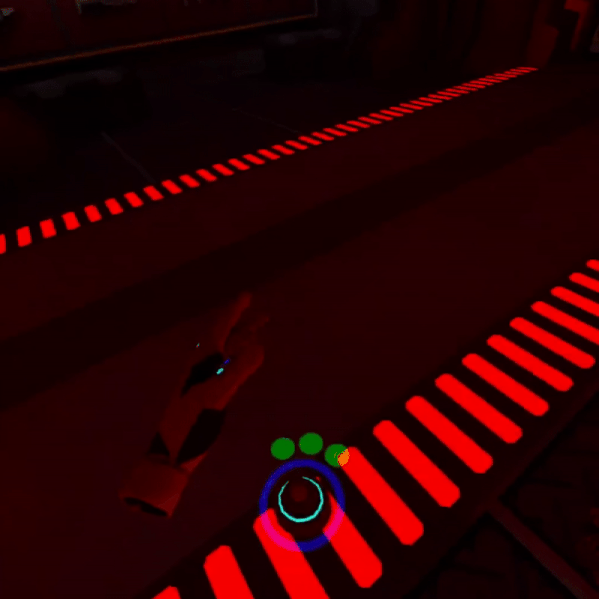
Survival horror means tight hallways.
Bullet hell means narrow passages of safety between enemy projectiles.
Both genre elements mean frenetic, claustrophobic combat.
And unpredictable explosives mean running in a panic from wherever you think you accidentally dropped them.
Far too many times—including near the end of tough boss fights—I killed myself by accidentally interacting with my grenades as they swiveled around my body.
Now, hopefully, you see why rating this one will have to come down to HOOEY.
PRESENTATION
Clearly, By Grit Alone has inspired a lot of feeling from yours truly.
And while I could keep praising and nitpicking in equal measure, this review is running long.
Instead, why don’t we bang out a few notes on presentation, some technical stuff, and then lay down a verdict, shall we?
Sound is stunning where it works, but falls short in a few crucial places.
The music is not one of those places.
It’s flawless; amplifying the dreadful atmosphere and sometimes cheekily contrasting it.
The voice acting delivers on this occasional cheek as well.
Mostly, the voice logs support the air of mystery and tension at hand.
But the grave reality of a horde of giant acid-spitting insects suddenly getting juxtaposed with a fully-produced radio ad for a distant vacation package made me chuckle.
More importantly, it framed the hellscape I was in against a backdrop of where I definitely was not.
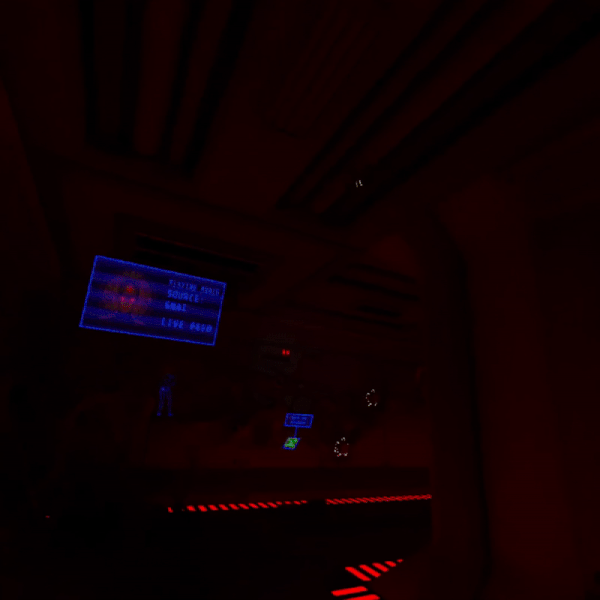
Performance is stellar: Crisp, clean, and fast.
While I certainly ran into issues—like the aforementioned inability to scroll through text logs with my left hand—these seem more like oversights than bugs per se.
Now my praise for the game’s performance is tempered pretty dramatically by its models and textures. Many assets are just subpar for a game released in late 2024.
Some bits look great. The alien biomass that decorates much of the ship’s interior, for example, is convincing and varied enough to show up all over the game without much asset cloning.
Other bits are… just passable.
I can imagine plenty of reasons that this might be:
Firstly, the game was originally developed for the Meta Quest 2 and then upscaled in some fashion for the 3.
Also, bullet hells take a lot of processing power just to calculate projectiles; all those simultaneous variables on-screen have to be accounted for.
More to the point, Crooks Peak is a small team with the visions of fully-fledged anthologies; every story featuring its own relevant enemies, characters, and locales.
Clearly, some corners had to be cut to make that happen.
And if visual corners are the ones to cut for the sake of this beautifully executed grand design, then I say so be it.
I just wish fewer of those corners were cut from the core mechanics.
VERDICT
In a sea of simulators, physics engines, and rhythm games, By Grit Alone stands out as a true linear, single-player story.
Intricate themes and motifs emerge through dialogue, story beats, pacing, and level design.
Genre-savviness pours out of places you’d never expect such that tone gets curated to a level that even AAA studios rarely manage.
By Grit Alone proves to me that Crooks Peak understands game design at its loftiest levels.
It all just connects in a way for which I scarcely have words.
Though I hesitate to stop reaching for them as I’ve yet done justice to this flagrant mastermindery.
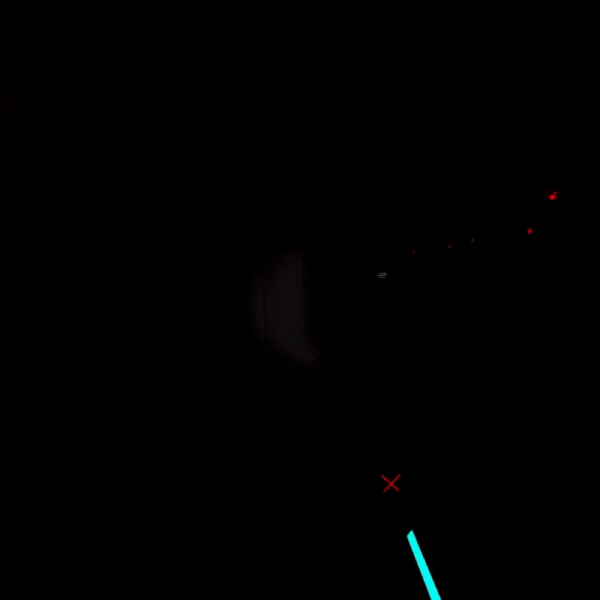
But at the lowest level—on the ground, where the players’ feet are usually planted—BGA seems to handwave away the importance of a strong core gameplay loop; the thing that almost every VR heavy-hitter sets as priority number one.
When I ran all of this conflicting data through my HOOEY, the lights here at Auganix HQ dimmed briefly, then burst—arcing electricity across the room!
I took cover as HOOEY loudly rattled and banged about.
Once the commotion was over, I approached the hulk of smoking machinery.
Across its CRT screen was not a number, but written in an unfamiliar white text along blue were the words:
“Give Charlie Cochrane more money and playtesters…”
I smacked the machine Fonzilly, flickering the screen back to its familiar black and green.
“6-7—-6-5-4——-9—6-8-6—-6—7—6—6”
One last smack and the flickering stopped.
“7/10”
I cleaned up and reviewed the numbers well into the night.
It took two hours of paper-feeding just to get the HOOEY’s full calculations printed, but the result was clear as day: 6.85714285714302354.
Yes, dear reader, it turns out that even in powerful edge cases like these, you can always rely on the HOOEY at Auganix for unbiased, totally empirical games journalism.
Hyper-Objective Omniscient Evaluation Yardstick
Scores are out of 10, where 10 is a masterpiece, 1 is unplayable, and 5 is just average.
Gameplay is weighted heavier in the overall score.
Gameplay – 6
Immersion – 8
Visuals – 5
Sound – 8
Performance – 10
Replayability – 5
Image / video credit: Stock Image / Auganix / Crooks Peak
About the author
Kierkegaard once said that the artist is like one stuck inside Phalaris' brass bull, which burned up its victims and—due to the formation of its apertures—made beautiful music from their anguish.
The critic, he said, is just like the artist except he doesn't have the anguish in his heart nor the music on his lips.
A lifelong gamer based out of Vancouver, Pelé disagrees with Kierkegaard.
